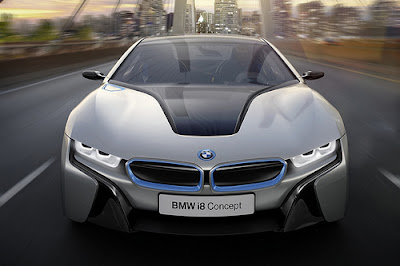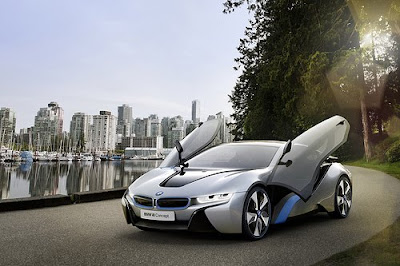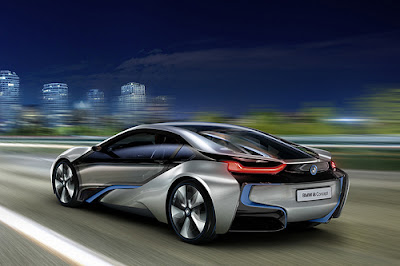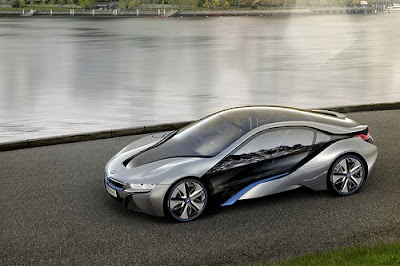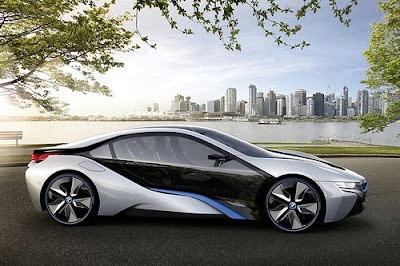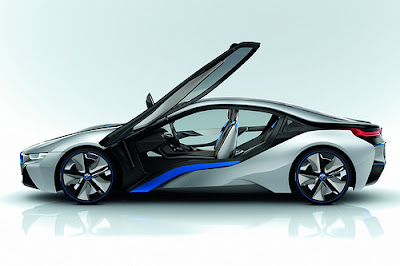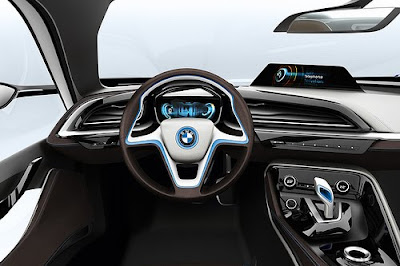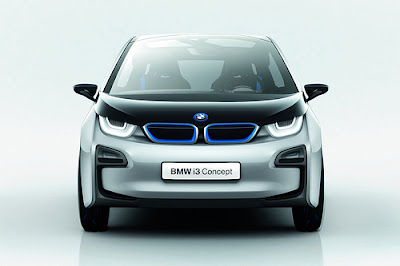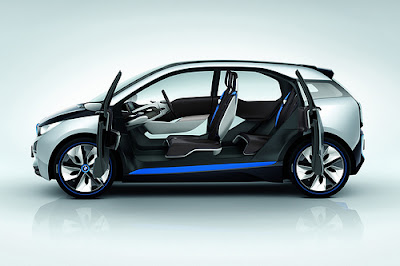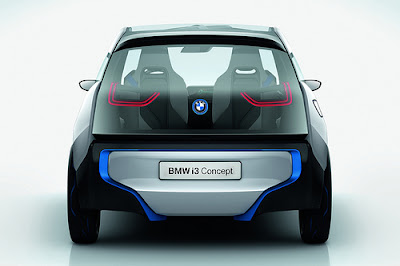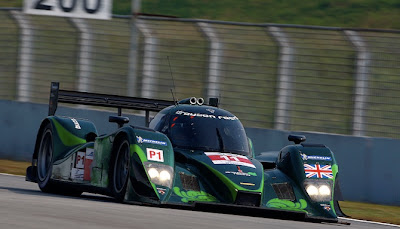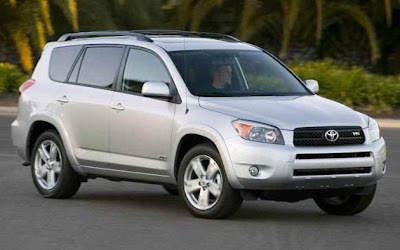Blog Archive
-
▼
2011
(1169)
-
▼
July
(62)
- Green Overdrive: The Fisker Karma [video]
- The BMW i3 EV Concept & i8 Hybrid Concept [video]
- BMW i8 Concept: First Look
- BMW i3 Concept: First Look
- BMW Shows Off Electric Concept Cars [video]
- Fully Charged episode 26 Renault Fluence ZE [video]
- Electric Cars Rule Georgia Town [video]
- HaloIPT and Drayson to Bring 'Wireless Charging' t...
- Renault F1 alarmed by electric pit running from 2014
- GM engineer gets 3,108 mpg in his Chevy Volt [video]
- TRANSLOGIC get to sample the EPIC 232se Electric ...
- Nissan to invest $68M to add Leaf motor production...
- Toyota Targets at Least 16,000 U.S. Plug-In Prius ...
- Autocar drives the Nissan Leaf Nismo RC [video]
- Fisker promises Bugatti Veyron levels of performance
- Toyota RAV4 EV Coming to Market in 2012
- 2012 Nissan Leaf upgraded for America
- How Its Made: Production of the BMW ActiveE begins...
- Audi to make all Chinese built models mild hybrids...
- Renault 4Lectric concept helps power the home and ...
- Tire
- Fully Charged Vauxhall Ampera Test Drive [video]
- Prototype version of the electric McRae 4×2 Dakar ...
- Japanese researchers triple li-ion battery capacit...
- Sony eyes making batteries for electric vehicles
- Renault to make 200,000 electric cars per year by ...
- Lola to develop electric racing car with Drayson R...
- Volvo announces three range extended EV concepts
- NYPD to Get 50 Chevy Volt Police Cars
- Fisker Has 3000 Karma Pre-Orders
- EVs are 1/10th the Cost to 'Fuel' Compared With IC...
- Successor to De Tomaso Pantera sports car show in ...
- Audi A1 e-tron wins 2011 Silvretta Electric Car Ra...
- Opel and Europcar Launch Major Electric Vehicle Co...
- Nissan and 4R Energy Develop new Solar EV Charging...
- Driverless electric cars to hit London
- NRMA’s roadside assistance goes electric
- Ford Make Tire Technology Breakthrough [video]
- Concept vehicle design by Turi Cacciatore
- New cars in the future
- Fully Charged INFINITI M35h Hybrid Test Drive [video]
- Car Alarms
- GM Volt reaches 2 million miles, 1.3 million of th...
- Nissan Leaf sales surpass 4,000 in U.S.
- Audi R8 (road car)
- Toyota City smart homes to use EVs for standby power
- Mitsubishi Debut Solar-Powered Vehicle Charging St...
- Mitsubishi's iMiEV gets better EPA rating than Vol...
- audi Spyder GT
- Mitsubishi Motors unveils cheaper i-MiEV electric car
- BMW Z5 2011
- TEKANAN DARAH TINGGI PADA DIABETESTEKANAN DARAH...
- Porsche Le Mans Return Could be a Hybrid Admits Mo...
- Nissan Leaf to go on sale in Norway this Autumn
- lexus
- Renting Cars on Holiday: 4 Things to Keep in Mind
- Hyundai i40 Mid-Size Model
- Japan Post Service starts testing Nissan NV200 Ele...
- New Audi RS3
- 2011 Ford Explorer
- A Nissan Leaf Laps Laguna Seca [video]
- Car Prototypes 2010-2011
-
▼
July
(62)
Green Overdrive: The Fisker Karma [video]
In the latest episode of Green Overdrive, Katie Fehrenbacher gets the full sales pitch on but no test drive of the first delivered Fisker Karma series hybrid electric vehcile.
The BMW i3 EV Concept & i8 Hybrid Concept [video]
More promotional video of the i3 EV Concept & i8 Hybrid Concept provided by BMW.
BMW i8 Concept: First Look
BMW's first plug-in hybrid vehicle will focus not just in saving the earth, but also on satisfying its driver's need for speed. Like the Chevrolet Volt, the BMW i8 concept combines a traditional gasoline engine with an electric drivetrain. According to BMW, the i8 can be as fuel-efficient as the best hybrid cars, while still delivering sports car-like performance.
An electric motor drives the front wheels, while a traditional gasoline engine drives the rears. The i8 can thus act as a front-, rear-, or all-wheel-drive car depending on which power sources are running. An "energy tunnel" containing the battery and drivetrain electronics runs down the middle of the vehicle, connecting the two axles.
The electric motor and engine peak at a combined 349 hp and 406 lb-ft of torque. That means the 0-to-62-mph sprint requires just 4.6 seconds. Top speed is electronically restricted to 155 mph. BMW says overall economy in European testing will be 2.7 liters per 100 kilometers, or 87 mpg. In real-world driving, the company expects the i8 to return mileage of 33 to 47 mpg. As gloating company executives note, no other production car can return the same combination of performance and economy.
The front-mounted electric motor is the same unit used in the i3 electric-car concept, but it is slightly modified to offer 128 hp and 184 lb-ft of torque. Because the i8 also has a gasoline engine, the electric motor's battery pack is significantly smaller than that in the i3. The i8 has an all-electric driving range of about 20 miles and can be fully charged in just under two hours. The electric motor can also recharge the battery, acting as a "through the road" hybrid system that can bolster the engine's output.
At the rear axle, a turbocharged 1.5-liter three-cylinder engine produces 220 hp and 221 lb-ft of torque. BMW would only tell us that the engine is mated to an "automatic" transmission with "enough" speeds. It may be a traditional automatic or perhaps a dual-clutch unit. However, BMW doesn't think the transmission in the i8 is very important to discuss as the electric motor provides plenty of torque regardless of the gasoline engine's operating speed or gear.
i8 Concept. The electric motor in the i8 Concept has been adopted from the BMW i3 Concept and modified for use in the i8 Concept’s plug-in hybrid power train—i.e., for operation with a smaller battery pack and in conjunction with an internal combustion engine. It drives the front axle, while a 164 kW/220 hp turbocharged three-cylinder gasoline engine developing up to 300 N·m (221 lb-ft) of torque drives the rear axle. Together, the two drive units take the vehicle to a governed top speed of 250 km/h (155 mph).
Like the electric motor, the 1.5-liter three-cylinder gasoline engine was developed entirely in-house by the BMW Group.
A high-voltage generator attached to the internal combustion engine can generate power for recharging the batteries. This option is only used to increase the range of the vehicle while out on the road, and is not intended as a substitute for stationary recharging at an electric power socket.
Locating the electric motor at the front axle of the BMW i8 Concept optimizes braking energy recuperation, since the front axle is where greater braking forces are developed due to the dynamic wheel load shift when decelerating. Whenever there is a chance to recuperate braking energy, intelligent driving dynamics systems make the most of it, taking into account traction conditions and driving situation, without compromising stability and dynamics, BMW says. This allows very high levels of braking energy recuperation even in the wet or in snow. Depending on requirements, braking is initially provided by the recuperation function and only when more powerful braking is required is the conventional brake system engaged.
BMW i3 Concept: First Look
BMW has finally given us our first official, undisguised look at its futuristic, all-electric city car. For now the i3 is still labeled a concept, but this car is much more complete than the MegaCity concept that preceded it. The four-passenger i3 concept is perhaps the most advanced take on electric cars yet, and draws on BMW's experience with a fleet of 600 Mini E and 1000 BMW ActiveE electric cars. Unlike those cars, however, which were traditional cars converted to electric drive, the i3 was developed from the ground up to accommodate electric propulsion.
The i3 is built around a new chassis concept called LifeDrive, which divides the vehicle into sections for Life, the passenger compartment, and Drive, the powertrain and battery. For the i3, the bottom half of the car is the Drive section, and is made mostly of lightweight aluminum; the Life passenger compartment sits on top and is built from carbon-fiber reinforced plastic (CFRP). Employing these lightweight materials keeps the i3's weight down to just 2750 pounds. The Nissan Leaf, for comparison, tips the scales at 3366 pounds.
BMW says that CFRP is as strong as but 50 percent lighter than steel. The entire Life CFRP shell weighs less than 220 pounds. Better yet, it never rusts and reportedly offers better protection than steel in a crash. CFRP only forms the Life sections' shell, however, as replaceable plastic panels form the i3's true bodywork. The Life section slots on top of the Drive chassis and is attached with strong adhesives and four bolts.
The i3's electric motor was developed by BMW because the company wanted tight control over the feel and performance of its powertrains. It is said to be 40 percent smaller than the similar motor used in the Mini E. It is rated at 170 hp and 184 lb-ft of torque, and has a single-speed transmission. The motor is located directly above the rear axle, making the i3 a rear-wheel-drive vehicle and also keeping the front-rear weight balance even.
The motor is fed by a liquid-cooled lithium-ion battery pack that is mounted under the floor of the passenger compartment. This means there is no intrusion or transmission tunnel in the cabin, and also helps keep the i3's center of gravity low for better handling and stability. BMW wouldn't specify the battery's storage capacity.
Though the maximum range per charge is rated at 140 miles, BMW admits real-world i3 mileage will be between 80 and 100 miles -- approximately on par with the range offered by the Nissan Leaf. Data from the Mini E trials taught BMW that a battery range of 74 to 93 miles would satisfy 90 percent of all drivers. The i3 concept can reach 62 mph in 7.9 seconds, and its top speed is limited to 93 mph because BMW says higher velocities would drain the battery too quickly.
A full charge is said to take just six hours via a standard European outlet, while an optional fast-charger yields an 80-percent charge in just one hour. Charge times on American 120-volt outlets will likely be longer.
i3 Concept. The electric motor of the BMW i3 Concept is designed primarily for operation in an urban environment. Already tested in a pre-production version in the BMW ActiveE, the version of this permanently excited hybrid synchronous motor which will be used in the BMW i3 Concept has undergone further optimization in terms of weight and driveability.
A single-speed gearbox accelerates the BMW i3 Concept to an electronically governed 150 km/h (93 mph). The BMW i3 Concept accomplishes 0-60 km/h (37 mph) in less than four seconds and 0-100 km/h (62 mph) in under eight seconds. The motor is located directly above the drive axle, for optimal and typical BMW rear-wheel-drive handling characteristics.
With the dual accelerator/decelerator function of the accelerator pedal approximately 75% of all braking operations around town can be performed by energy recuperation which generates a braking effect, BMW says. Intensive use of this energy recuperation function of the electric motor can increase the driving range by up to 20 per cent. Only when the driver’s braking request exceeds a given level is the conventional brake system of the BMW i3 Concept engaged as well.
A coasting facility makes this single-pedal control of acceleration and braking using just the accelerator even more user-friendly. The BMW i3 Concept features a distinct “neutral” position of the accelerator pedal—i.e. rather than switching straight to recuperation when the driver eases off the pedal, the electric motor’s zero torque control keeps the drive train disconnected as long as the pedal is in this position. The vehicle now coasts without consuming power, driven by its own kinetic energy. Used as part of a proactive driving style, this coasting mode is a way to increase the driving range even further.
BMW developed the motor and power electronics for the i3 Concept entirely in-house. The space requirements of the electric motor used in the BMW i3 Concept have been reduced by 40% compared with the motor used in the MINI E. This compact drive unit is mounted over the rear axle, together with the power electronics, transmission and differential, causing no loss of interior space.
The BMW i3 Concept’s battery system has also undergone detailed optimization which reduces the extent to which external factors can influence the vehicle’s power and driving range. An integrated liquid cooling system keeps the battery at its optimal operating temperature at all times, helping to boost the performance and life expectancy of the cells. The climate/heating system cools the fluid circulating in the battery housing via a heat exchanger.
If necessary, in winter, this fluid can also be heated in order to bring the battery up to its optimal operating temperature of around 20 °C. The battery can be fully recharged in six hours at a standard power socket. If a high-speed charger is used, an 80% charge can be achieved in just one hour.
Optional range extender. The BMW i3 Concept offers an optional Range Extender, the REx, which allows the electric driving range to be increased. REx, a small gasoline engine, drives a generator which maintains the battery charge level and therefore extends the range of the electric motor. As soon as the battery charge reaches a critical level, REx supplies the necessary energy to get the driver the rest of the way to the destination.
The compact size of the electric motor used in the BMW i3 Concept means there is room left over to accommodate REx and its attached generator over the rear axle, alongside the drive components. The gasoline engine complies with the SULEV standard. To reduce fuel consumption to a minimum, REx also features such functions as Automatic Start-Stop and other intelligent operating strategies.
BMW Shows Off Electric Concept Cars [video]
BMW AG on Friday presented two concept cars for the first generation of electric vehicles to be launched under its new sub-brand i starting in 2013, and said it will invest in a company named Parkatmyhouse, which offers a service to rent out private parking space via Internet or smart-phone application.
The upcoming i3 “will mark the launch of the first volume-produced car featuring bodywork largely made of carbon,” BMW research and development chief Klaus Draeger said during a presentation in Frankfurt.
BMW didn’t elaborate on the expected annual sales volume, but Chief Financial Officer Friedrich Eichiner noted that in terms of earnings per vehicle the new cars will contribute to the company’s targeted earnings before interest and taxes margin range of between 8% and 10%. Making electric cars economically viable despite expensive components such as the battery is a key challenge for the global auto industry.
The world’s largest luxury-car maker by sales volume will initially launch two new vehicles under the new sub-brand, the BMW i3 and the BMW i8, which will be launched in 2013 and 2014, respectively, and built at BMW’s German plant in Leipzig. The i3 will be a purely electric powered car for urban areas. The i8 will be based on the plug-in hybrid sportscar concept BMW Vision EfficientDynamics.
The new sub-brand is the outcome of BMW’s Project i, a task force established in 2007 to explore future mobility concepts and one of the Munich-based firm’s most important think tanks. It is a cornerstone of BMW’s plan to expand in the field of alternative drivetrains and green technology, making cars more environmentally friendly to comply with tightening emission regulations world-wide.
In November, BMW said it will invest around €530 million and create more than 1,000 jobs, together with its joint-venture partner SGL Carbon SE, as part of its plan to launch the new megacity vehicle and start producing carbon fiber components to reduce the vehicle’s weight.
Both companies forged a U.S. joint-venture to produce carbon fiber in Moses Lake, Wash.
BMW has named SB LiMotive, a joint venture between Samsung SDI Co. Ltd. and Robert Bosch GmbH, as the battery supplier for the new car. The battery is a key component for electric vehicles as it determines the range and performance of the car.
Fully Charged episode 26 Renault Fluence ZE [video]
An announcement about the series and a short drive in the Renault Fluence ZE
Electric Cars Rule Georgia Town [video]
The town of Peachtree Georgia has been adapted to cater for electric golf carts.
With 90 miles of purpose built pathways, almost every family in this town of 34,000 owns a golf cart for local commuting. There are approx 10,000 electric golf carts in Peachtree displacing the more typical family mode of transport in the US, the gas guzzling SUV or Minivan.
Peachtree, a suburb of Atlanta, is only a short distance from Augusta Georgia which is home to two of the largest Electric Golf Cart manufacturers in the USA, Club Car and E-Z-Go.
HaloIPT and Drayson to Bring 'Wireless Charging' to Electric Motorsport
HaloIPT today announces a new strategic partnership with Drayson Racing Technologies, the green R&D racing organisation founded by Lord Drayson, former UK Minister for Science and Innovation. The partnership will use HaloIPT's unique wireless charging technology to power high-performance cars as they race around the track.
The partnership with Drayson Racing, which develops and races green motorsport technology, including electric vehicles, aims to pioneer the deployment of dynamic (in-motion) charging of zero emission electric vehicles. The racing cars, fitted with HaloIPT technology, will pick up power wirelessly from transmitters buried under the surface of the road or race track; transferring power directly to the vehicle's electric battery, ensuring that the vehicle receives constant charging on the move.
This innovation is made possible because HaloIPT's tried and tested technology provides a significant tolerance to misalignment over the transmitter pads, automatically adjusting for changing vertical gap. The system has the ability to intelligently distribute power: ensuring a consistent delivery of power at speed.
HaloIPT and Drayson Racing will work together on the development of electric drive-train packages and trackside-charging systems to replace the internal combustion engine and fuel pit stops.
Lord Paul Drayson, co-founder of Drayson Racing said: "Dynamic wireless charging will be a real game-changer, enabling zero emission electric vehicles to race over long periods without the need for heavy batteries. This is a milestone innovation that will have a dramatic effect not just on racing but on the mainstream auto industry. We're looking forward to putting this technology through its paces as it charges electric race cars at speeds of up to 200 mph."
Dr Anthony Thomson, CEO of HaloIPT, said: "HaloIPT's technology has a proven heritage in dynamic charging and we are excited to be transferring this expertise to the electric vehicle market. The deal with Drayson Racing demonstrates the appetite for technology that makes driving an electric car more convenient, and this is certainly the case in the motorsport sector - nothing could be more convenient than a race car that re-fuels itself on the track."
Renault F1 alarmed by electric pit running from 2014
Renault team boss Eric Boullier is among a number of Formula One personalities to express fears that plans to make cars run electrically in the pits from 2014 is too dangerous.
The proposal that "the car must be run in electric mode (no ignition and no fuel supply to the engine) at all times when being driven in the pit lane" was included in the governing FIA's new 2014 regulations published last week.
Other environmentally-friendly ideas were also adopted but some teams feel they were not adequately consulted on the changes by the governing body.
"The concept is intriguing but... the cars would not make noise and that could be very dangerous," Boullier told reporters at the German Grand Prix.
"I think there are aspects of the rules published by the FIA which should be looked at again."
Formula One is due to switch to a new 1.6 litre turbo V6 engine with energy recovery systems from 2014. The sport currently uses V8 units.
Boullier is also keen on an extra practice session rather than just two on a Friday from 2012 while teams continue to talk with the FIA about a return to some form of in-season testing from next year.
GM engineer gets 3,108 mpg in his Chevy Volt [video]
In a bit of tongue-in-cheek marketing, GM blog has posted a video showing the dash display of a Chevy Volt leased by General Motors Battery Systems Engineer Andy Oury.
Showing the Volt's maintenance mode, which cycle the fuel and lubricate parts of the vehicle if the engine hasn't been used, the dash display also shows the vehicles lifetime MPG numbers of 1554.1 Miles range having used just 0.5 Gallons of gasoline. This is a good illustration of the main advantage of a plug-in as opposed to a non-plug-in hybrid electric vehicle.
Note: The 2011 Chevy Volt has an EPA-estimated 35 miles on a single charge; EPA-est. 93 MPGe [electric]; 35 city, 40 MPG hwy [gas]. Actual range varies with conditions.
TRANSLOGIC get to sample the EPIC 232se Electric Sport Boat [video]
Aol's Translogic web TV series get the chance to put the EPIC 232se electric sport boat to the test with World Champion wakeboarder Jeff Weatherall.
Nissan to invest $68M to add Leaf motor production to US plant [video]
Nissan Americas today confirmed that, starting in early 2013, it will produce the electric motor for the Nissan LEAF at its Decherd, Tenn., powertrain assembly plant.
Preparation of the plant for electric motor production, facilitated by U.S. Department of Energy Advanced Technology Vehicles Manufacturing Incentive Program loan funds, will include addition of a new assembly line and will create up to 90 new jobs.
When the new assembly line is completed, the plant will have the capacity to produce up to 150,000 electric motors annually for Nissan LEAFs, which will be built at the company's assembly plant in Smyrna, Tenn.
"Nissan's Tennessee operations are paving the way to a zero-emission future for everyone," said Bill Krueger, vice chairman of Nissan Americas. "By delivering motors for the first mass-produced electric vehicles manufactured in the United States, our Decherd plant will play a vital role in making zero-emission mobility a reality for American consumers."
The work to support the electric motor assembly line represents the fifth addition to Nissan's Decherd operations, which began production in 1997. The new assembly line will be located within the existing facility using 100,000 sq.-ft. of available floor space, and will feature highly automated, state-of-the-art equipment including wire winding machines, magnetization and magnet insertion equipment, varnishing and hot press equipment and test equipment.
Today, the 1.2 million sq.-ft. Decherd plant produces engines and components for Nissan vehicles built in North America, and also houses engine casting and forging operations. The plant currently has the capacity to produce 950,000 engines, 1.1 million crankshaft forgings and 192,000 cylinder-block castings annually.
Nissan will produce the Nissan LEAF and the batteries that power it at its Smyrna manufacturing complex. The advanced, lithium-ion battery plant is on track to be operational late next year at approximately the same time LEAF production is targeted to begin in Smyrna.
Toyota Targets at Least 16,000 U.S. Plug-In Prius Sales
Toyota said it expects U.S. sales of at least 16,000 plug-in Prius hatchbacks in 2012 after the model debuts early in the year.
The new version of the world’s best-selling hybrid, designed to be recharged at a standard 110-volt outlet, will go at least 13 miles solely on its lithium-ion battery pack, John Hanson, a Toyota spokesman, said in an interview. After that, it will operate like a standard Prius, averaging 50 miles per gallon of gasoline in city and highway driving, he said.
“We think it’s going to be a strong seller and we’ll deliver to whatever level the market wants,” he said yesterday. “We’re certainly on line to sell 16,000 to 17,000 in 2012.”
Toyota has dominated sales of alternative-power vehicles since it brought the Prius to the U.S. in 2000, selling 140,928 of the hybrids last year. The new version from the Toyota City, Japan-based company joins a market for rechargeable autos led this year by Nissan Motor Co.’s electric Leaf and General Motors Co. (GM)’s plug-in Volt.
The Leaf and Volt offer greater all-electric range, with as much as 100 miles for the Yokohama, Japan-based Nissan’s model and about 35 miles for the GM car. The Prius plug-in will have a pricing edge. Hanson said the new version will begin U.S. sales “very early” next year, without elaborating.
Toyota’s target is “reasonable, but the issue will be availability,” said Alan Baum, principal of automotive consulting firm Baum & Associates in West Bloomfield, Michigan. The Japan-built plug-in will also be in demand in Toyota’s home market and Europe, so U.S. supplies may be tight, he said.
Federal, State Incentives
Toyota expects the plug-in Prius to sell for $3,000 to $5,000 more than a standard version, which starts at $23,520, said Jana Hartline, a company spokeswoman.
The car should qualify for a federal tax credit of at least $2,500, Hartline said. While Toyota hasn’t begun a promotional campaign for the plug-in, 29,000 potential customers have “pre- registered” to buy one on the company’s website, she said.
In California, the plug-in Prius should also qualify for a $1,500 rebate and be allowed to use carpool lanes even with a solo driver, said Mike Ferry, program manager for the state’s Center for Sustainable Energy, which distributes the payments. The most populous U.S. state is requiring sales of plug-ins and battery-only autos starting in 2012 to reduce pollution.
Leaf, Volt Prices
Nissan said yesterday that 2012 model Leafs would cost $35,200 to $37,250, an increase of 7.4 percent and 10 percent from 2011 versions, to cover additional equipment. That’s before a $7,500 federal tax credit. Ferry said the Leaf also qualifies for a $2,500 California rebate in 2012 and carpool-lane access.
GM’s Volt costs $40,280, before the $7,500 federal tax credit. While the 2011 Volt didn’t qualify for California rebates, the Detroit-based automaker has said it will meet state requirements by 2012. That would let buyers get a $1,500 rebate and access to carpool lanes with a solo driver, Ferry said.
Toyota’s Hartline said the plug-in Prius’s “relatively small battery” doesn’t require 240-volt home chargers, which cost about $2,000 to install and may also require rewiring for older houses that can add a few thousand dollars in expenses.
“We’re finding in our research, from our demonstration program, that that is an appealing factor for many people,” said Hartline, who is based at Toyota’s U.S. sales unit in Torrance, California. The model recharges in three hours from a 110-volt outlet or as little as 90 minutes from a 240-volt charger, she said.
Autocar drives the Nissan Leaf Nismo RC [video]
Autocar's Colin Goodwin had the rare opportunity to test drive the Nissan Leaf Nismo RC prototype racer around "Britain's fastest racing circuit" Goodwood.
However, Autocar's selection of a test driver who starts complaining the moment he gets in the car and who is a fan of "piston engines" spoils the video.
Fisker promises Bugatti Veyron levels of performance
The Fisker Karma is still MIA, but that hasn't stopped the company from having grand ambitions.
According to CEO Henrik Fisker, engineers are developing a new gearbox that will give their range-extended electric vehicles "[ Bugatti] Veyron levels of performance." That's not much to go off, but the executive hinted the transmission would increase the amount of torque that is sent to the wheels.
For comparison, the Bugatti Veyron 16.4 accelerates from 0-100 km/h in 2.5 seconds while the Fisker Karma takes 5.9 seconds.
Source: Autocar
Toyota RAV4 EV Coming to Market in 2012
Recent reports have incorrectly stated that the 2012 RAV4 EV will only be marketed to fleet and car sharing programs. We’d like to set the record straight. The 2012 RAV4 EV will definitely be sold to the general public. We anticipate robust public interest in the RAV4 EV and are keen to inform consumers that their future vehicle options include a battery electric Toyota.
Toyota is the only manufacturer bringing two battery electric vehicles to the market in 2012 - the RAV4 EV and the Scion iQ EV. While the RAV4 EV will be available to the public, the Scion iQ EV will be marketed to fleet and car sharing programs only.
Multiple reports have been corrected on various automotive blog sites
Toyota
2012 Nissan Leaf upgraded for America
Nissan North America Inc. is expanding availability of the all-electric Nissan LEAF to U.S. consumers for the 2012 model year, with upgrades based on feedback from the thousands of owners who already have driven several millions of miles in the first 100-percent electric car for the mass market.
The Nissan LEAF, enriched with additional standard equipment including quick charging and cold-weather features for the 2012 model year, now will be available for order in the Southeastern United States and Illinois.
"Many enthusiastic consumers have eagerly anticipated ordering a Nissan LEAF of their own, and now we can make zero-emissions mobility a reality in more markets," said Brian Carolin, senior vice president, Sales and Marketing, Nissan North America. "In response to direct feedback from Nissan LEAF owners, the features that customers want most will come standard on the 2012 Nissan LEAF - including quick charging and cold-weather features."
Nissan on July 25 will open up the ordering process to consumers with existing reservations in Alabama, Florida, Georgia, Illinois, Maryland, Mississippi, North Carolina, South Carolina, Virginia and Washington, D.C.
After the prioritized ordering phase for existing reservations in those markets, Nissan on Aug. 4 will open new reservations and orders to the general public, both in these new markets, as well as places where the Nissan LEAF already has been on sale (Arizona, California, Hawaii, Oregon, Tennessee, Texas, and Washington). Expected delivery of the first 2012 Nissan LEAFs will begin in the fall.
The MY12 vehicle features product enhancements that incorporate feedback from early LEAF drivers, including standardizing the most popular options. These features include:
DC Fast Charge capability standard on Nissan LEAF SL: The vast majority of MY11 consumers have opted for the DC fast charge port, which allows the vehicle to be charged at 480V - reducing charging time to under 30 minutes for charging the vehicle to 80 percent from a fully depleted state. As DC fast charge stations proliferate across the country, Nissan expects this feature to become even more popular. For 2012, fast-charging capability will be standard on the SL trim level.
Cold weather features standard on Nissan LEAF: As the Nissan LEAF rolls out to U.S. markets with colder climates, cold weather features become standard equipment on all trim levels of the Nissan LEAF. These include a battery warmer, heated steering wheel, and heated seats in both the front and rear.
The manufacturer's suggested retail price of the 2012 Nissan LEAF is $35,200 for the SV trim level, and $37,250 for the SL trim level. The monthly lease price will begin at a highly competitive $369.
Nissan will expand into additional new markets as the year continues. In the fall, orders from existing reservations and new reservations will begin in Connecticut, Colorado, Massachusetts, New Jersey and New York. By the end of the year, Delaware, Indiana, Louisiana, Nevada, Ohio, Pennsylvania, and Rhode Island will be added as markets where the Nissan LEAF will be available for order.
More than 4,000 Nissan LEAFs have been delivered to U.S. customers, and Nissan, as it begins the next phase of the launch, continues to learn from them. While 82 percent have never previously owned a Nissan, a full 75 percent considered no other vehicle than the Nissan LEAF in their purchase decision. On a whole, these early adopters report that they are using the Nissan LEAF as their primary car, and driving it far more than was originally anticipated. These consumers, most of whom are highly educated and have high income levels, are technologically savvy, environmentally conscious, and consider themselves advocates for electric-car technology.
How Its Made: Production of the BMW ActiveE begins [video]
Just a few years ago, the zero-emission vehicle seemed little more than a dream to Mirco Schwarze, a team leader at the BMW plant in Leipzig.
Now, just a couple of years later, the BMW ActiveE is rolling off the assembly line in Leipzig. More information at
Youtube
Audi to make all Chinese built models mild hybrids [video]
Audi will equip all of its Chinese made models with mild hybrid technology next year according to an interview with Mr Dominique Boesch of the GM of FAW-VW’s Audi sales unit.
The mild hybrid technology can reduce energy consumption by 3-5% said Mr Boesch. They have not made the final decision on pricing.
They are also considering applying mild hybrid technology to the imported Audi models. Mr Boesch also said that they will launch Audi Q5 coming with full hybrid technology in the near future, and then launch all-electric vehicles.
Audi has started to develop new energy vehicles since 1989. It’s also the first automaker to launch hybrid technologies, including mild hybrid and full hybrid. By 2009, Audi had launched five all-electric vehicles.
Renault 4Lectric concept helps power the home and local community
Electric vehicles are intended to be used as modes of transportation, but Charlie Ngehiem’s Renault 4Lectric concept aims to be something different. The Renault 4 concept created by him makes the vehicle do something more than it has been all these years. His Renault 4Lectric concept vehicle is not just a mode of transportation like its other cousins, but it can sustain a whole community by supplying power to them. The concept is one of the 50 entries shortlisted by Designboom for their Renault 4EVER competition.
The aim of the designer is to create a “circular economy” through the use of a humble vehicle. Well, it is not so humble after all. The car uses solar power to generate electricity for itself as well as for an entire community of people. The purpose is to create a self-sustaining, functional as well as an environmentally responsible model of vehicle, which will cater to every need of its owner.
The 4Lectric comes fitted with two batteries which act as the main power source of the vehicle. Solar films attached to the windows and roof of the vehicle helps the battery to generate electricity from sun’s rays. Apart from that, the car will also be fitted with numerous thermal sensors. The purpose of having two batteries is that one battery accumulates energy when the other one is engaged in powering the vehicle. Therefore, when the user goes to a charging station for charging the vehicle, he gets only the amount needed to charge the first battery as it was already accumulating energy during its rest period.
The batteries can also be charged at home. A two-way circuit allows the energy from the vehicle’s battery to be used for domestic purposes. At no time, the car is passive. Even when it is parked, the car is active because it constantly generates its own energy. The second battery functions much like the other battery does with one difference. Since it is designed for collective consumption, it helps in redirecting the accumulated energy to a storage center. This way, the car can be extremely useful in remote areas where availability of electricity is limited.
Tire
Tires Tires
Specifications tires often forgotten. In fact, the numbers found on the tire wall is veryinformative and payers are known.
We can know the tire size, type tubles or not, the level of speed, maximum carrying capacity and much more tire information that we use. Below will be explained the meaning of a row of numbers.
Take for example P215/65R15 89H. Let's look at one-one:
Q: For passenger vehicles (passenger)
215: This symbol indicates the tire width is measured from one wall to another. That is, itdetermines the number of millimeters of tread. The bigger the number, the tire treads willlook more broadly.
65: The ratio of height to width. The bigger the tire wall numbers will look higher. The smaller the number the lower the tire wall.
R: Construction of tires. The symbol R represents radial tire type.
15: The diameter of the tire, or better known as the ring 15. Usually correspond to the diameter (ring) wheels.
89: Power Index. Each figure has a different carrying capacity levels. It is also associated with the maximum wind pressure of n measured in units of PSI (pounds per square inch) and Kpa (kilopascals).
H: Rate of speed. Each letter has a different rate. The rate at which it covers:
- Q maximum speed of 158 km / h
- S a maximum speed of 179 km / h
- T a maximum speed of 188 km / h
- Maximum speed of 198 km U / h
- H a maximum speed of 208 km / h
- V maximum speed of 240 km / h
- Z maximum speed above 240 km / h
From the above explanation we can choose the tires which are in accordance with our wishes
Sometimes we are confused how do we change our car tires according to vehicle load and road conditions in order to avoid the things that we do not want
Specifications tires often forgotten. In fact, the numbers found on the tire wall is veryinformative and payers are known.
We can know the tire size, type tubles or not, the level of speed, maximum carrying capacity and much more tire information that we use. Below will be explained the meaning of a row of numbers.
Take for example P215/65R15 89H. Let's look at one-one:
Q: For passenger vehicles (passenger)
215: This symbol indicates the tire width is measured from one wall to another. That is, itdetermines the number of millimeters of tread. The bigger the number, the tire treads willlook more broadly.
65: The ratio of height to width. The bigger the tire wall numbers will look higher. The smaller the number the lower the tire wall.
R: Construction of tires. The symbol R represents radial tire type.
15: The diameter of the tire, or better known as the ring 15. Usually correspond to the diameter (ring) wheels.
89: Power Index. Each figure has a different carrying capacity levels. It is also associated with the maximum wind pressure of n measured in units of PSI (pounds per square inch) and Kpa (kilopascals).
H: Rate of speed. Each letter has a different rate. The rate at which it covers:
- Q maximum speed of 158 km / h
- S a maximum speed of 179 km / h
- T a maximum speed of 188 km / h
- Maximum speed of 198 km U / h
- H a maximum speed of 208 km / h
- V maximum speed of 240 km / h
- Z maximum speed above 240 km / h
From the above explanation we can choose the tires which are in accordance with our wishes
Subscribe to:
Posts (Atom)
